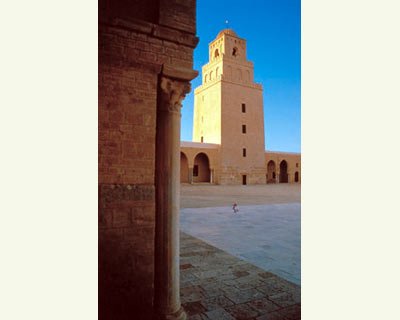The oldest Islamic religious edifice erected in the Muslim West
It is, unquestionably, the oldest Islamic religious edifice erected in the Muslim West.
It was in 670, during the first campaign for the annexation of Ifriqiya to the nascent Muslim empire. After choosing the location of the "cantonment" - al qayrawân - at the edge of the mountainous foothills in the north of the country - in which he set up his troops in the wake of a first victorious offensive, General Okba Ibn Nafaa hastened To erect a seat for the Government of the Ifriqiyan Province, and an oratory of raw bricks, which in the ninth century, after several rearrangements and with a few details, will present itself under the appearance that we know today at the Great Mosque .

It is a singular monument, like the Great Mosque of Kairouan, whose perfect harmony perfectly conceals an architectural "synchretism" that is unique in its genre.
The materials used in its construction all originate from ancient sites belonging to various periods prior to the Islamic conquest, while the general appearance of the building, in particular the minaret, reflects a distant oriental influence. The whole forms an original set, with sober features but not lacking in elegance.
As for the interior decoration, we must speak of exuberance: a veritable explosion of geometrical and floral motifs carved in the fine marble which decorates the facade of the mihrâb, the niche that indicates the direction of Mecca or engraved in the panels Of precious wood that make up the minbar, pulpit for the preaching.